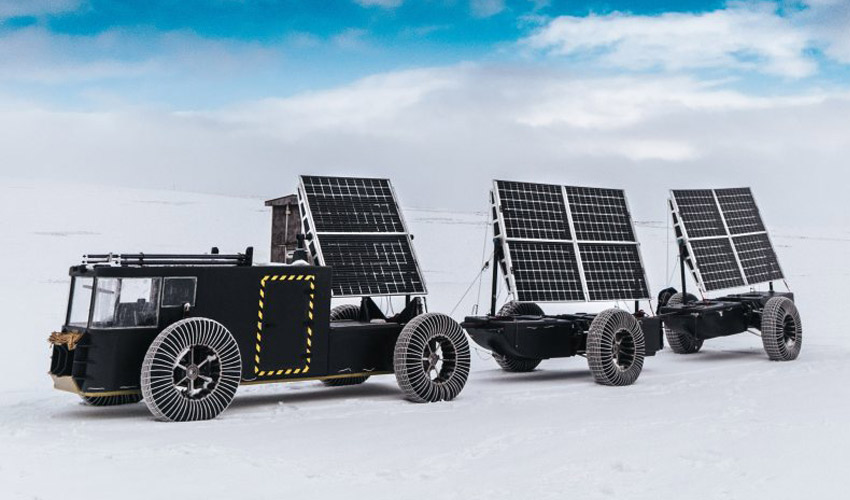Solar Voyager; 3D printed electric vehicle going to Antarctica

Clean2Antarctica is a Dutch association whose aim is to promote the circular economy and to encourage organisations and individuals to develop sustainable alternatives to our current way of life. To do this, the team has gone on an expedition to the South Pole in Antarctica. Aboard the Solar Voyager is an electric vehicle made of 3D printed parts made from recycled plastic. It should be fully powered by solar energy and leaft at the end of November.
Founded by the couple Edwin and Liesbeth ter Velde, the Clean2Antarctica association supports a zero waste lifestyle. Which entirely consistent of 3D printing technologies that aim to produce less waste because they only use the material they need. In addition, additive manufacturing today allows to use more environmentally friendly materials. Some filaments are derived from recycled plastic waste. We can here also look to the ProtoCycler machine that offers value to these used plastics by transforming them into 3D printing filaments.

Edwin and Liesbeth chose to go to Antarctica for several reasons, they explain: “Antarctica contains 90% of the world’s ice and belongs to no one. It is zero waste by law, making it the perfect destination for a zero waste adventure. We can learn from Antarctica and make sure it stays that way. We also want to raise awareness for the Antarctic treaty. If not extended in 2048, the continent will be opened for commercial exploitation.“
Solar Voyager, an electric vehicle designed through 3D printing
To get to the mainland, the team created the Solar Voyager, a 16-meter long, 1,485-kilogram vehicle. It can reach a speed of 8 km / h and contain food for 47 days. But what is most interesting is that it is composed of 4000 3D printed hexagonal blocks. Called HexCore, these blocks look like honeycomb structures, a form that offers both lightness and strength. The Clean2Antarctica team explains that it has shredded plastic waste, melted it to make a 3D printing filament feeding its 40 3D printers. It took 200 pounds of plastic to design the chassis blocks alone!

HexCore 3D printed
The Solar Voyager is composed of 10 solar panels of 1.7 square meters and 25 kilos each. In case of emergency, the vehicle is equipped with two batteries of 60 kilos with a total power of 10 kWh. However, the vehicle will not carry water. Instead it includes vacuum solar tubes that will melt the snow and turn it into drinking water. Infrared interfaces are also installed in the cabin. This to help absorb sunlight and keep the cabin warm.

The travellers departed from their base camp at Union Glacier on the far south of the continent on November 28th. From there they travel to the South Pole. The round trip is 2,400 km and the team hopes to achieve it in 30 days. Edwin and Liesbeth concludes: “It’s not about technology but about starting experiments and discovering what’s possible with waste. To reach a circular society, we need to start doing things differently. Our expedition is an example how far you can get when you simply start doing things differently instead of talking about abstract solutions.” A strong message that we will get peoples attention! The first call from the solar voyage back to the base have already been made. You can find out more about this and other information on the trip HERE.
What do you think of the Solar Voyager? Let us know what you think in a comment below or on our Facebook and Twitter pages! Don’t forget to sign up for our free weekly Newsletter, with all the latest news in 3D printing delivered straight to your inbox!






